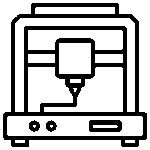SMPS High-Current Design Guide – Build Powerful & Safe Supplies

🔧 The Problem :
Designing an SMPS (Switched-Mode Power Supply) for high-current loads can lead to excessive heat, voltage drops, and EMI issues if not handled properly. Poor PCB layout, underrated MOSFETs, or thin traces can quickly burn your circuit.
💡 The Solution :
Start by selecting low R<sub>DS(on)</sub> MOSFETs, thick copper PCBs, and short, wide traces. High-current paths need to be robust and low resistance. Also, use solid electrolytic capacitors and toroidal inductors to manage ripple and avoid noise.
🔌 Real-World Example :
Let’s say you’re building a 12V, 20A SMPS for a 3D printer. If you use a PCB trace that’s only 1mm wide, it will overheat. Instead, increase the trace width or use parallel copper wires to handle the current safely.
📏 Sample Calculation :
To carry 20A, assuming 1oz copper PCB:
Use a trace width calculator, but roughly:
Trace Width ≥ 200 mil (5.08mm) for safe operation.
Always add thermal vias or soldered copper strips to reinforce!
🛠️ Product Suggestion :
Need MOSFETs and flux for clean soldering and efficient power switching?
Shop now at SmartXProKits.in
🇮🇳 Support our work and India’s innovation—buy from our Make in India site!




















